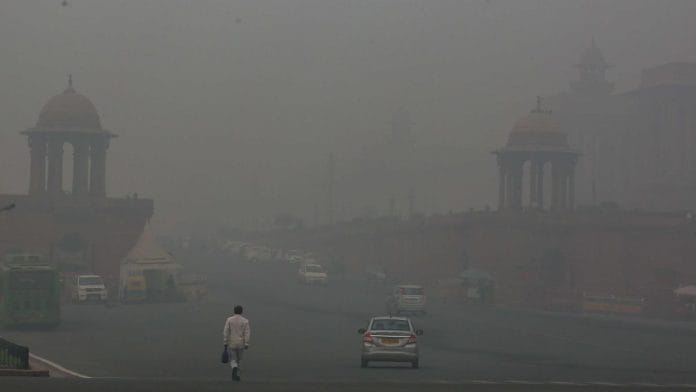New Delhi: Angul, a small city in Odisha, saw harmful particulate matter (PM10) levels in the air jump from a mere 97 micrograms per cubic metre (µg/m3) in 2018 to 167 µg/m3 this year, despite being a part of the central government’s National Clean Air Programme (NCAP).
In response to a question in the Lok Sabha Monday, the Ministry of Environment, Forests and Climate Change (MOEFCC) provided details of the country’s 130 cities that were chosen for the NCAP. The official goal of the programme is to reduce PM10 concentrations in the air by 40 percent by 2025-26. According to data the ministry released, 31 cities have seen an increase in PM10 concentration out of the 130 that are a part of NCAP, which began in January 2019.
Visakhapatnam and Angul saw more than 50 percent increase in their PM10 concentrations. For Balasore and Guwahati, that figure was more than 30 percent, while for Bhubaneshwar it was 34 percent.
Cities like Barrackpore, Muzaffarpur, Cuttack and Guwahati saw more than 15 percent increase in PM10 concentration levels since 2018. Indore, touted as one of the cleanest cities in India, saw its PM10 levels go from 82 to 99 µg/m3.
At the same time, Navi Mumbai on the outskirts of Mumbai, saw PM10 concentration increase by 11 percent. Patna saw an increase of 3 percent.
Cities that fared better
Two cities have seen zero change in their annual average PM10 concentration levels, namely Talcher (Odisha) and Nalgonda (Telangana), while 14 others have seen a less than 5 percent decrease in pollution.
Till now, only 23 cities have been able to achieve the target in various degrees, with Varanasi leading the pack with a 68 percent reduction by 2024. ThePrint had earlier reported air quality experts’ apprehensions on monitoring stations in Varanasi.
Brynihat, which was the most polluted city in 2023 according to a Centre for Research on Energy and Clean Air (CREA) report, completed its NCAP goal, having reduced pollution by 41 percent—from 175 to 104 µg/m3.
Another city was Greater Mumbai, which has reduced pollution by 42 percent to 94 µg/m3, though Navi Mumbai saw an increase by 11 percent, reaching 98 in 2024 from 87 in 2018.
Among slow movers were pollution hotspot Delhi, which saw its annual PM10 concentration marginally reduce from 214 to 208 µg/m3 in the last 6 years; Noida too from 229 to 182.
Ghaziabad, another city in the National Capital Region that has routinely flagged high AQI levels above 250 this season, also made it to this list. It is the 23rd city that has managed to reduce PM10 concentration in its air by 40 percent, from 285 to 172.
(Edited by Tikli Basu)
Also read: Delhi’s five pollution hotspots






